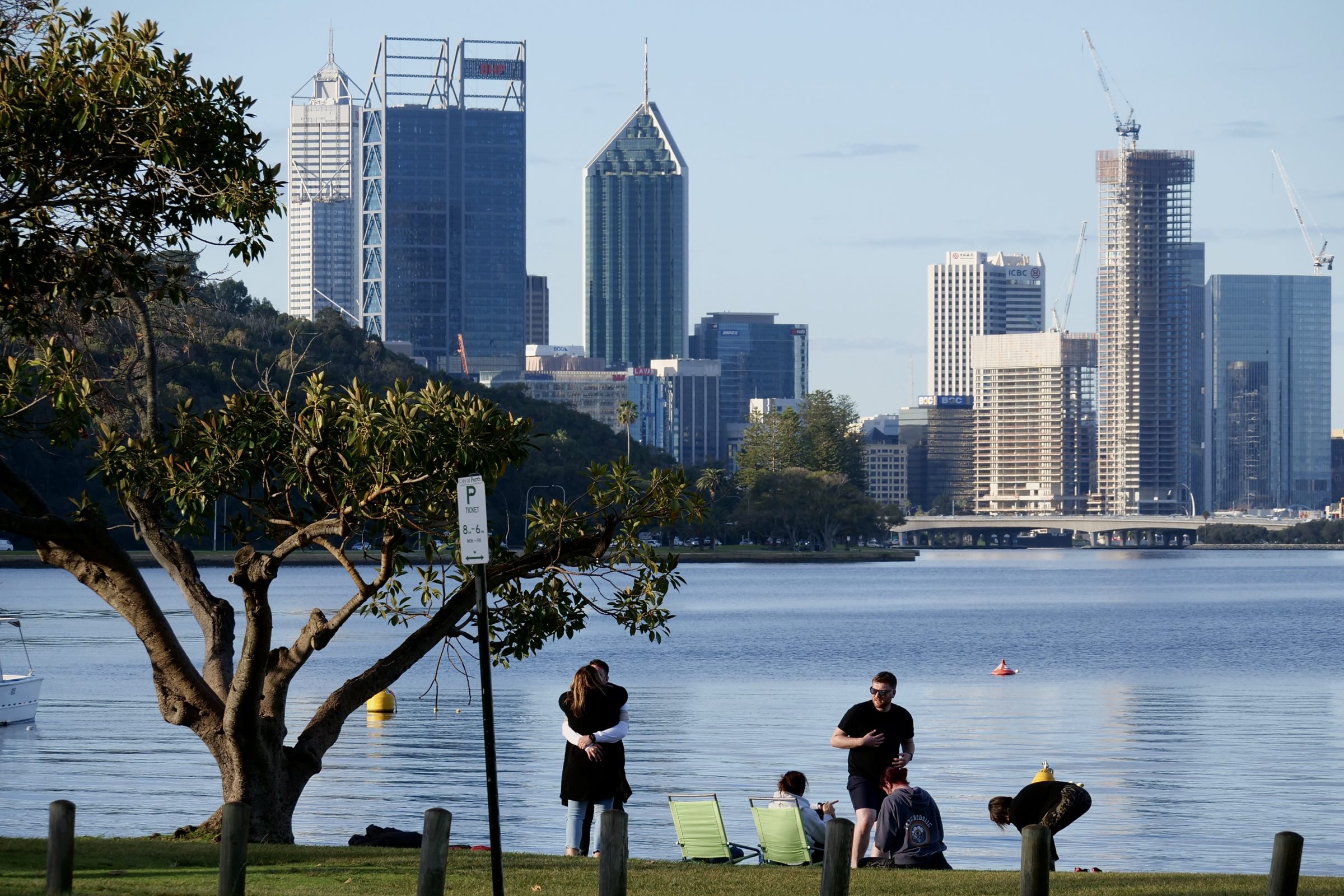McGowanstan’s capital city is a very paradoxical, much-misunderstood metropolis.
State and city, respectively, are also known as Western Australia and Perth.
This single-image series will mostly look at details, but it begins panoramically.
The featured image was taken from one of Perth’s favourite picnic spots – the Matilda Bay foreshore, just across the road from the University of Western Australia, and looking across the Swan River to the Kings Park escarpment and Perth CBD.
How often does “the bleak midwinter” – a time of year which many locally-raised residents abhor – look like it did at 4.30 pm on 12 July 2022?
A few true things which are illustrated by the photo: Perth really is the sunniest Australian capital city, it is almost certainly the most generously-endowed with public spaces, and it is much more affluent than are some others.
A couple of things that are also true, notwithstanding this image: on average, Perth’s winter is enormously wetter than is Melbourne’s, and Perth is much the windiest Australian capital city.
According to some sources, Perth is the world’s second windiest substantial city; most sources rate Wellington #1.
According to others, Perth is not even one of the top ten “windy cities”.
Certainly, Perth is much windier than Chicago; “The Windy City” is not even one of the USA’s ten windiest cities.
(originally, Chicago’s nickname probably referred to the bluster of its tycoons and politicians, not to anything meteorological)
Wind statistics are measured in umpteen different ways, so a definitive “Global wind table” simply does not exist.
It is worth knowing, however, that Perth’s wind statistics are based on daily readings taken at 9am and 3pm; any longtime resident of Perth knows that on many summer days the easterly wind is much stronger from 2 am through 8 am than at 9 am, whilst the west/southwest “Fremantle Doctor” is generally much stronger at 5 pm than at 3 pm.
Perth locals like to deride Melbourne as “Bleak City” and to mock its “unreliable” weather.
In summer, Perth’s weather is much more “reliable” – generally, unrelentingly, much hotter, and drier…until “the Doctor” blows in and makes many Perth summer nights kinder than many Melbourne (and Adelaide) nights.
In winter, however, Perth is a serious rival to Melbourne in the “if you don’t like the weather right now, just wait five minutes” department.
The key difference is that Perth’s winter is generally a deal warmer, and that even though a typical Perth winter delivers much more rain than a Melbourne one, Perth winters feel much drier.
Perth rain is much more “efficient” – a much greater proportion arrives very quickly, via squalls; a much greater portion of Melbourne’s rain is delivered slowly, as persistent drizzle.
In most years a deal more than half of Perth’s annual rainfall arrives in June through August.
Thoroughly grey days are rare in Perth, but common in Melbourne; even very rainy Perth winter days often include a deal of bright sunshine.
Many Perth winter days are entirely sunny and mild.
Most of Perth is built on sand, literally – sky juice “disappears” almost instantly, and Perth’s winds are very dessicating, its sunshine prodigiously intense.
Although Perth’s average annual rainfall is higher than Melbourne’s (and Canberra’s, Adelaide’s and Hobart’s), Perth feels like it must be our driest capital…and Perth winters really are much less “bleak” than Melbourne’s, Adelaide’s and Hobart’s.
#2 in this series looks down, to paved ground, midst “acres of tar and cement”.
